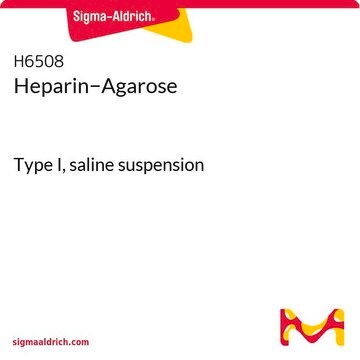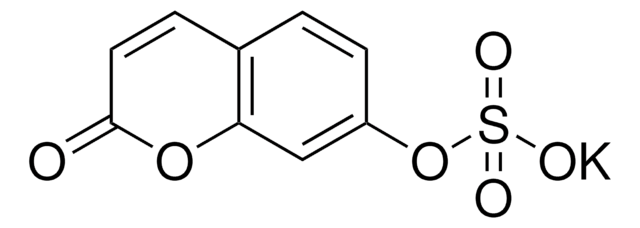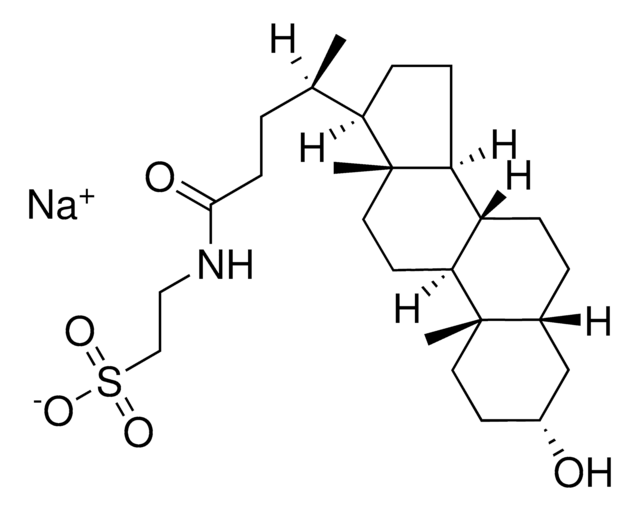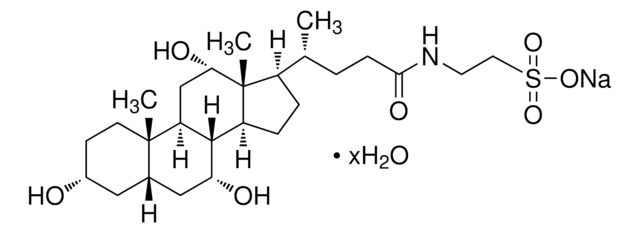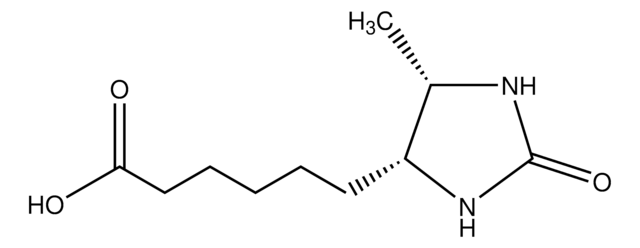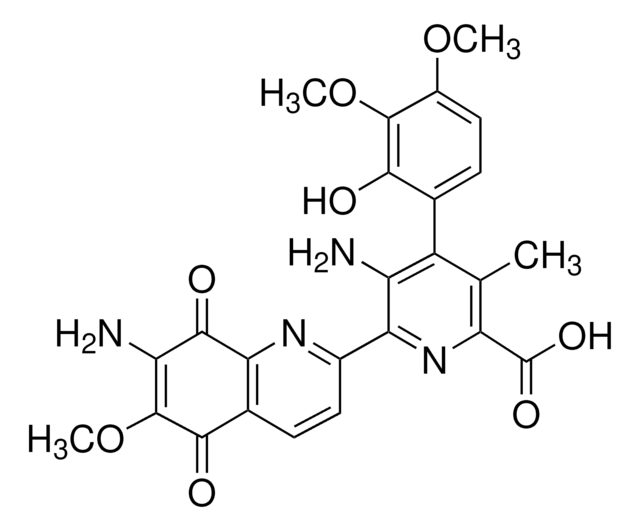H5257
Hispidin
solid, ≥98% (HPLC)
Synonym(s):
6-(3,4-dihydroxystyrl)-4-hydroxy-2-pyrone
About This Item
Recommended Products
biological source
synthetic (organic)
Assay
≥98% (HPLC)
form
solid
storage condition
protect from light
color
yellow to brown
mp
237.5-238.5 °C
solubility
DMSO: >10 mg/mL
storage temp.
−20°C
SMILES string
OC1=CC(/C=C/C(O2)=CC(O)=CC2=O)=CC=C1O
InChI
1S/C13H10O5/c14-9-6-10(18-13(17)7-9)3-1-8-2-4-11(15)12(16)5-8/h1-7,14-16H/b3-1+
InChI key
SGJNQVTUYXCBKH-HNQUOIGGSA-N
Gene Information
human ... PRKACB(5567) , PRKAR2B(5577) , PRKCB(5579)
General description
Biochem/physiol Actions
Storage Class Code
11 - Combustible Solids
WGK
WGK 3
Flash Point(F)
No data available
Flash Point(C)
No data available
Personal Protective Equipment
Certificates of Analysis (COA)
Search for Certificates of Analysis (COA) by entering the products Lot/Batch Number. Lot and Batch Numbers can be found on a product’s label following the words ‘Lot’ or ‘Batch’.
Already Own This Product?
Find documentation for the products that you have recently purchased in the Document Library.
Our team of scientists has experience in all areas of research including Life Science, Material Science, Chemical Synthesis, Chromatography, Analytical and many others.
Contact Technical Service
